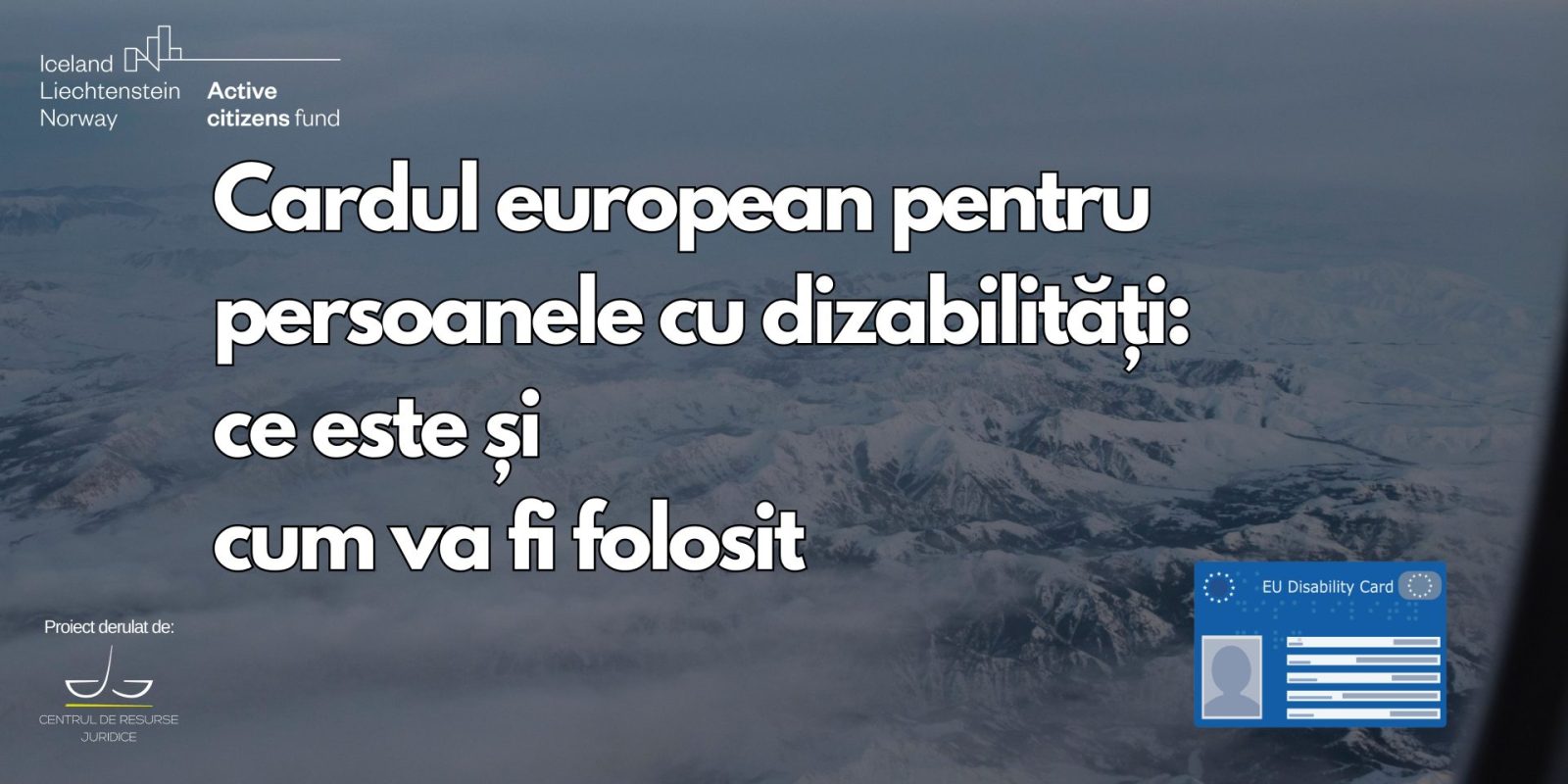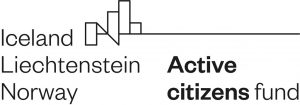An initiative for the recognition of the rights of persons with disabilities to free movement within the EU – some considerations regarding the steps the EU, together with the member states, still has to take
The adoption of the United Nations Convention on the Rights of Persons with Disabilities (UNCRPD[1]) in 2006 marked progress in setting the minimum standards for the rights of persons with disabilities. Both the European Union and its member states are parties to the Convention.
The European Pillar of Social Rights[2] serves as a compass for employment and social policies, proclaimed in 2017 jointly by the European Parliament, the European Council, and the European Commission. Principle 17 of the pillar emphasizes that persons with disabilities have the right to income support that ensures living in dignity, services that enable their participation in the labor market and in society, and an environment adapted to their needs.
The European Strategy for the Rights of Persons with Disabilities 2021-2030[3] aims to improve the lives of persons with disabilities, in the EU as well as in all member states. Its objectives can only be achieved through coordinated action at both the national and EU levels, and member states must make a strong commitment and impose on national and local authorities the implementation of the actions proposed by the Commission.
One of these initiatives, one step closer to realization, is the Directive on the European Disability Card.
On February 8, 2024, the EU institutions announced[4] that they had reached a political agreement regarding the Directive establishing the European Disability Card and the European Parking Card for persons with disabilities. This directive, announced in the EU Strategy for the Rights of Persons with Disabilities 2021-2030, will contribute to the implementation of the CRPD Convention in the EU and will align with the principles of equal opportunities and inclusion of persons with disabilities.
In the following, we will analyze the implications of the future Directive on the European Disability Card.
EU member states will have 42 months to distribute the cards, including 30 months for the transposition of the legislation into national law. This means that, in reality, the card will become operational in 4 years.
However, it is noteworthy the EU’s effort to include the voices of persons with disabilities in the development of this Directive, as shown in an online survey[5]] where over 3,300 respondents, 78% of whom are persons with disabilities, have responded.
The Directive will include, among others:
- Recognition of disability at the European level through this card. Thus, persons with disabilities traveling within the EU will be guaranteed equal access to special conditions and preferential treatment regarding access to public and private services, as well as to activities and facilities, such as, among others, Braille or audio guides for public transport, discounts at cultural events, museums, or sports centers;
- Equal access to parking spaces designated for persons with disabilities in all EU states;
- The card will be issued free of charge by the member states, in both physical and digital formats;
- Another provision mentions the necessity for the information about the conditions and procedures required for issuing the card to be publicly available, in an accessible format;
- Persons with disabilities and their support persons will be recognized the right to have their opinions heard as member states will have to establish mechanisms that allow persons with disabilities to take legal action against the state in case of irregularities.
Unfortunately, this directive could be further improved by:
- Eliminating the exceptions added to the purpose of this directive regarding the exclusion of specific services in cases where the benefits granted are dependent on additional assessments;
- Providing temporary access to support and financial aid for persons with disabilities when they move abroad to study or work. In its current form, the directive may not recognize the right of persons with disabilities to certain benefits during long stays, which further restricts their right to free movement within the EU;
- The lack of provisions regarding the allocation of EU funds to supplement the effort of member states in issuing these cards.
The website of the National Authority for Persons with Disabilities[6]contains some information regarding the European Disability Card. It is noteworthy that Romania was one of the eight countries participating in this pilot project[7].
Unfortunately, we note that the website dedicated to informing the target audience is not fully adapted to all categories of disabilities, which makes the dissemination of information difficult. There is also a lack of national reports dedicated to illustrating the progress achieved in Romania through the use of this card during the implementation of the pilot project. Nationally, the National Strategy on the Rights of Persons with Disabilities, “An Equitable Romania” 2022-2027, sets out the areas of action to ensure the full and effective participation of persons with disabilities, based on freedom of choice, in all areas of life and in an accessible and resilient environment.
While the EU initiative is commendable, there are still multiple elements that could be improved by the European legislator. First and foremost, it is important to underline that this legislative initiative takes the form of a Directive; it would have been preferable for the European legislator to adopt a Regulation, to have a binding effect for all member states and to result in a much more uniform and efficient implementation of the Card.
The directive should impose on service providers clear accessibility standards, as well as training through courses or guides for professionals to truly implement its provisions. A useful recommendation should aim not only at the European recognition of all types of certificates attesting to the existence of a disability at the European level but also at making services offered accessible in all 24 official languages of the EU.
Moreover, the exchange of information and experience accumulated in each member state should be encouraged, to easily overcome any impediment discovered in the implementation of the directive. At the same time, the use of the card should be monitored, and statistical data, compliant with the European Regulation on personal data collection (and respecting the right to privacy of persons with disabilities), should be collected by service providers to provide implementable recommendations efficiently and swiftly.
Another area that could be improved refers to the consistency of information available across all member states, considering each country has a different legislative system, it is hard to imagine how without a concerted effort, real results could be achieved in all EU countries. National officials should have regular meetings to share best practices and find solutions to encountered problems, to not further restrict the right to free movement in the EU.
The European legislator will also need to ensure the real, effective implementation of this card’s benefits, through complaint mechanisms that do not further hinder access for persons with disabilities to various facilities. It remains to be seen how information will be provided, for example, in residential care homes, where access to benefits is already limited for persons with disabilities. Also, for persons with disabilities who benefit from legal counseling, information about the possibility of using the card and even the use of the card itself will still depend on the agreement of guardians, yet it remains to be seen how these guardians will be held accountable in practice. Perhaps we should even ask how they will be prepared and informed about this initiative.
Another shortcoming of the directive is the absence of references to recognized benefits and services in the field of social assistance from labor law. Just as citizens without disabilities are recognized the right to move not only to travel but also to work in EU states, this should be equally guaranteed for persons with disabilities. For example, currently, students with disabilities who wish to pursue long-term programs in universities in other member states than their country of origin will have to undergo a cumbersome process of recognizing their disability in the residence state to have the same benefits as other citizens. For now, the card recognizes benefits for students with disabilities following short-term programs, such as ERASMUS+.
It must be taken into account that not all persons with disabilities (for example, those institutionalized) have access to the internet or means of media communication. And often, even when they do, it’s hard to know in advance what benefits they can receive, as long as there isn’t a central database of service providers with concrete explanations. These shortcomings, compounded by possible excessive bureaucracy to obtain the card, will render the card’s use negligible.
The rights of persons with disabilities should not stop at the border of a member state. And for the right to free movement to become a reality for persons with disabilities, this needs to be built on the basis of a universal design, through fully accessible public transport, easily available digital technologies, and a wide range of services, not only in the medical or therapeutic field but also in the cultural sphere, or regarding public transport or employment of persons with disabilities.
Author: Oana Dodu
Certainly, here are the references translated and formatted as per your instruction:
[1] The Convention, available here: https://social.desa.un.org/issues/disability/crpd/convention-on-the-rights-of-persons-with-disabilities-crpd
[2] The interinstitutional proclamation on the European Pillar of Social Rights, available at: (https://eur-lex.europa.eu/legal-content/EN/TXT/?uri=CELEX:32017C1213(01)
[3] Union of Equality – Strategy of the Rights of Persons with Disabilities 2021-2030
[4] https://ec.europa.eu/social/main.jsp?langId=en&catId=1139&furtherNews=yes&newsId=10763)
[5] For more details about the survey: https://ec.europa.eu/social/main.jsp?langId=en&catId=89&furtherNews=yes&newsId=10659
[6] Available here: http://dizab.eurocard.gov.ro/
[7] Alongside Belgium, Cyprus, Estonia, Finland, Italy, Malta, and Slovenia. The project took place between 2016-2018.



